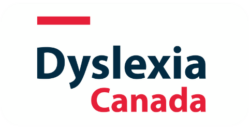Data Sources in Grade 3
In a structured literacy approach, we rely on different types of assessments to answer different questions about student outcomes. Screeners help us quickly identify risk, diagnostic tools help us dig deep into specific skills, and progress monitoring allows us to track how well instruction is working over time. Each tool serves a unique purpose, but together, they provide a complete picture and guide our instructional decisions.
Screeners
Universal screening is mandatory for students in Year 2 Kindergarten to the end of Grade 2. Check with your board to find out which screening system is being used (Acadience, EasyCBM, or AimsWeb+).
Although universal screening is not mandatory in Grade 3 and beyond, these tools are reliable, valid, and support teaching, learning, and intervention. ONlit encourages the use of universal screening from Kindergarten to Grade 8 and believes strongly that they are an important tool in the ongoing formative assessment practices of educators.
In the following section we have highlighted the three different screeners that are on the Ministry of Education’s Approved List of Screeners. However, beyond Grade 2, educators may be able to choose screeners that are reliable and valid, but not chosen for the K-2 mandatory approved list. The Dynamic Indicators of Basic Early Literacy Skills (DIBELS 8) is an example of this. Check with your board to find out which screening tools are approved for use in your school board.
Oral Reading Fluency (ORF)
Skills Assessed: Advanced Phonics and Word Attack Skills; Accurate and Fluency Reading of Connected Text; Reading Comprehension
Oral Reading Fluency (ORF) is a measure of advanced phonics and word attack skills, accurate and fluent reading of connected text, and reading comprehension.
During the ORF assessment, a student is asked to read aloud a grade-level passage or a series of passages for a specific duration, usually one minute. The student reads as accurately and fluently as possible, with an emphasis on accuracy, and automaticity. The assessment may also include comprehension questions to gauge the student’s understanding of the text.
Oral reading fluency in connected text is more than the accurate reading of words in lists and is not speed-reading. Oral reading fluency can be described as the bridge between accurate, automatic, word-level decoding and reading comprehension. (Acadience Reading K-6 Assessment Manual, 2011)
While the passages may seem difficult, it’s important to remember that these are research-based tools that have been carefully created and researched. It is important to use them as they have been researched (using grade-level materials with the standardized directions provided). Research shows that these tools are more reliable and accurate than previously used tools like the Benchmark Assessment System or the DRA: we can trust these data more, and use them to make better decisions about students, schools, and boards.
Acadience Reading K-6
Length: 1 minute/text + 1 minute retell, x 3 texts
When: Middle of Grade 1 to end of Grade 6
easyCBM
When: Middle of Grade 1 to end of Grade 8
aimswebPlus
Length: 1 minute/text x 2 texts
When: Middle of Grade 1 to end of Grade 8
MAZE
MAZE is a standardized measure of reading comprehension. The purpose of a maze procedure is to measure the reasoning processes that constitute comprehension.
During the MAZE assessment, a student is presented with a passage of text with certain words omitted and replaced with multiple-choice options. The student reads the passage silently and selects the correct word or phrase that best fits each gap in the text. The student’s ability to accurately choose the correct options reflects their comprehension of the text.
Specifically, MAZE assesses the student’s ability to construct meaning from text using word recognition skills, background information and prior knowledge, familiarity with linguistic properties such as syntax and morphology, and reasoning skills.
(Acadience Reading K-6 Assessment Manual, 2011)
Acadience Reading
Length: 3 minutes
When: Beginning of Grade 3 to end of Grade 6
easyCBM
Not assessed
aimswebPlus
Silent Reading Fluency
Length: 4-6 minutes
When: Beginning of Grade 4 to end of Grade 8
Optional Assessments
Both easyCBM and aimswebPlus offer additional optional assessments that are not required for screening, but educators may be able to access them. Please check with your school or board for more information.
easyCBM
- Vocabulary (Grade 2 – Grade 8)
- Proficient Reading (Grade 2 – Grade 8)
- Basic Reading (Grade 3 – Grade 8)
aimswebPlus
- Listening Comprehension (Grade 1 – Grade 8)
- Spelling (Year 2 Kindergarten – Grade 8)
- Reading Comprehension (Grade 2 – Grade 8)
- Vocabulary (Grade 2 – Grade 8)
Diagnostics
Depending on the skills of your students and their results on your universal screener, further investigation into the depth of their skills may be required. Diagnostic assessments vary from school board to school board, but could include assessments in:
- oral language skills
- phonemic awareness
- phonics
- decoding
- spelling
- morphology
- fluency
- reading comprehension
- writing
Many school boards have a list of approved diagnostics. Connect with your school leadership team and/or board curriculum contact for more information.
Progress Monitoring
Progress monitoring allows educators to assess and track students’ growth over time, supporting quick decision-making about the effectiveness of instruction
Acadience Reading K-6, easyCBM, and aimswebPlus all have progress monitoring materials that can be used to monitor student’s response to intervention. Progress monitoring should focus on no more than two related skills at a time and should be primarily focused on the skill receiving the most intensive intervention.
Depending on your board’s screener choice, you may have access to a digital system that tracks student progress over time, or you may need to create a paper graph to visualize progress.




